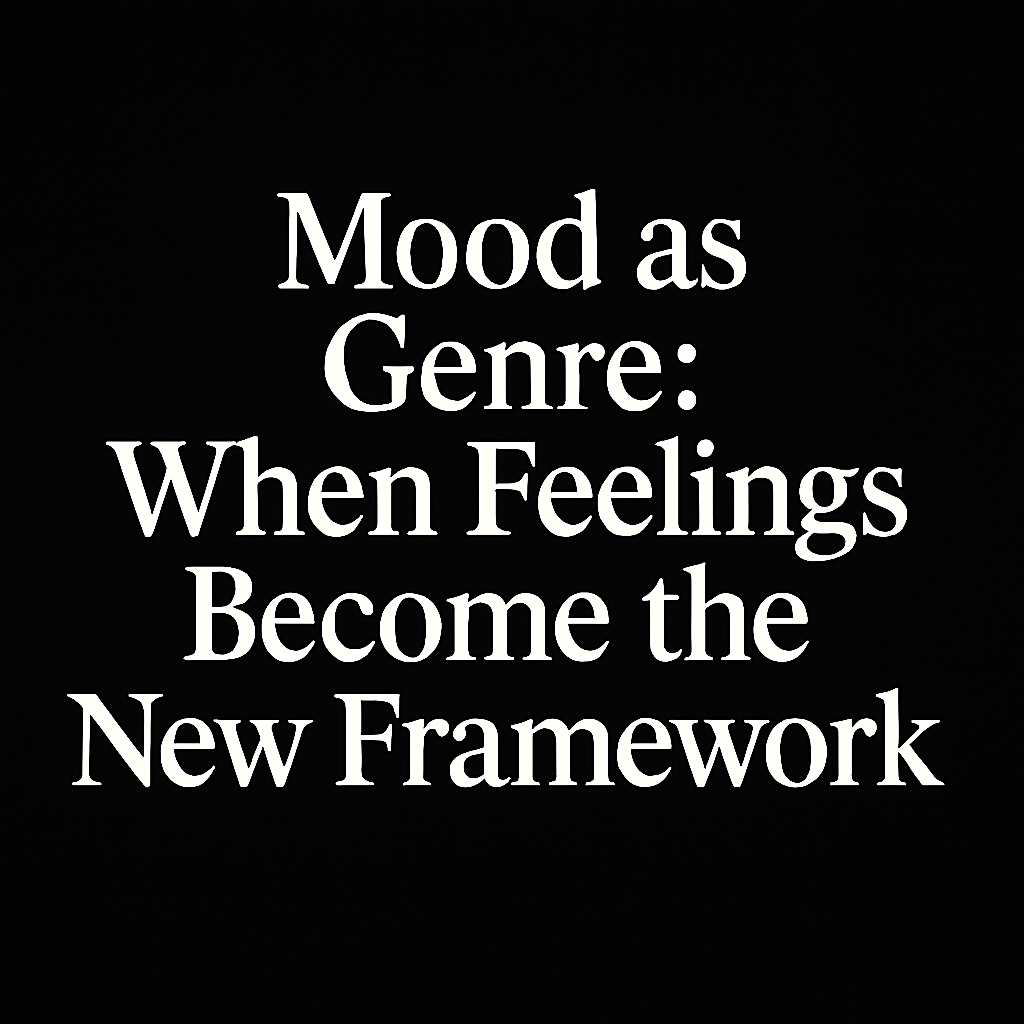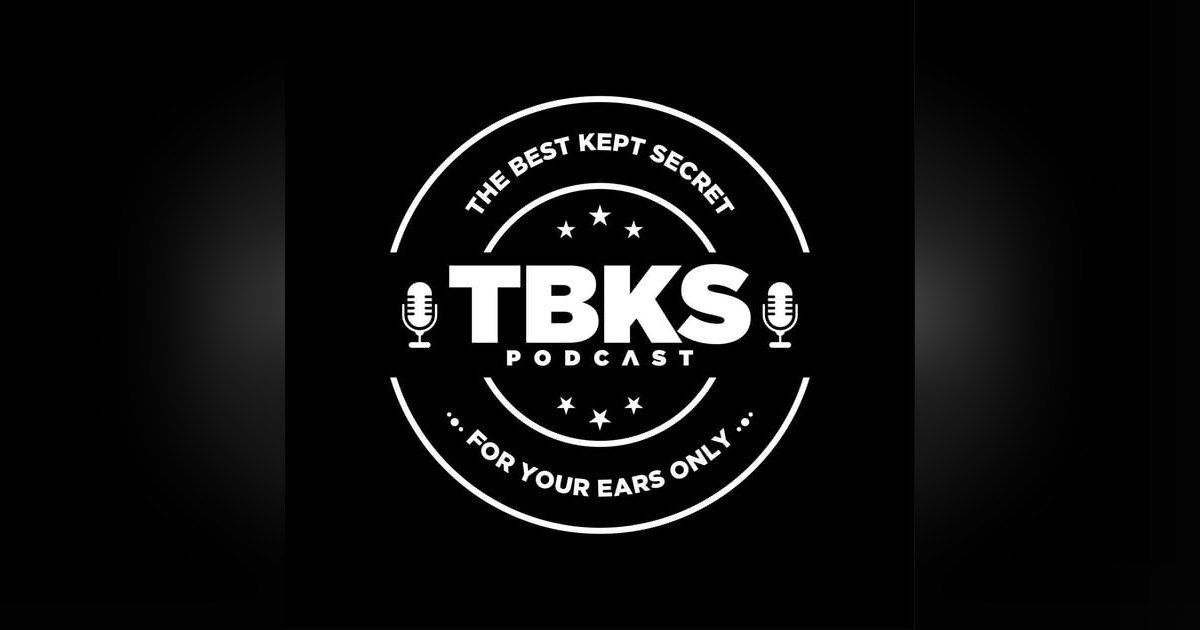Mood as Genre: When Feelings Become the New Framework

Recently I was asked to curate a playlist on ‘longing and nostalgia’, and it got me thinking about our relationship with music in this modern era of digital/streaming. Sure enough, a couple days later, I found myself scrolling through my collection of music, not searching for hip-hop, R&B, or any other tidy label. I was looking for something that felt like the ache of late-night longing in a big city… the tension, the electricity, the sweetness and the bite. Eventually, I found it, and in that moment, genre meant nothing. The feeling was everything.
That isn’t a fringe impulse anymore. Increasingly, the mood is the genre.
The Shift from Genre to Vibe:
Once upon a time, genre was the map. Record stores had neatly divided aisles: jazz in one corner, punk in another, soul holding down the middle. Magazines organised their coverage the same way. Now, the streaming carousel is a line-up of emotional weather reports: Chill Vibes, Sad Boi Hours, Songs to Cry in the Shower To. The algorithms behind them aren’t “listening” for whether something is kwaito, drill, or indie rock. They’re scanning tempo, harmonic energy, dynamic range, and lyrical sentiment, then packaging that information as feeling.
Artists have noticed. Many are no longer writing toward a genre’s blueprint, but toward an emotional endpoint. The result is music that transcends categories and connects on a more instinctive, almost cinematic level.
How Artists Are Composing for Mood:
Some moods translate directly into creative language. Grief, for example, often resists musical resolution. Another one is anxiety. Zoocci Coke Dope’s Anxiety+ is a diary of unease, its sparse production echoing the suffocating quiet of uncertainty and paranoia. Across the globe, Flying Lotus’s You’re Dead! turns mortality into a psychedelic fever dream. It’s the same emotional architecture that gives Kenneth Lonergan’s Manchester by the Sea its devastating weight: every frame, every note, refusing the comfort of closure.
Lust, by contrast, is about pacing, tension, and release. While not South African, Kelela’s Raven sits in a pan-African alt-R&B lane that local artists like Filah Lah Lah and Amarafleur also occupy; sleek, fluid, and unapologetically sensual. Janelle Monáe’s Dirty Computer takes that sensuality and frames it as liberation. Wong Kar-wai’s In the Mood for Love is their cinematic cousin, a film where desire is rendered through glances, colour, and restraint rather than declarations.
Then there’s nostalgia. Perhaps the mood most often mistaken for a genre in its own right. lordkez’s latest project, You, Me & the 90’s, doesn’t just borrow sonic references from that decade, it reimagines its textures and cultural markers through a modern lens, evoking the feeling of being young in a world that no longer exists. Truly an incredible body of work and display of artistry by one of my favourite artists of all time. Lana Del Rey’s Norman Fucking Rockwell! works the same trick, hazily longing for an imagined past. Cinema has Cinema Paradiso, by Giuseppe Tornatore, a film about remembering not just what happened, but the feeling of remembering.
Rage is harder to pin down because it can be loud and explosive or quiet and cutting. PatrickxxLee thrives in both extremes. His ability to channel raw frustration into melodic yet aggressive tracks make his music feel like a diary of unfiltered emotion. Little Simz’s No Thank You is its global mirror, elegant in its fury and refusal. In film, Spike Lee’s Do the Right Thing stages rage like a pressure cooker, the heat building until release is inevitable.
The Benefits and Pitfalls of Feeling First:
Thinking in moods instead of genres breaks down walls. It lets a listener move from an amapiano track to an ambient folk piece to a shoegaze anthem without caring whether they “belong” together. For artists, it’s a liberation; they can lay amapiano percussion under alt-R&B chords and indie-folk melodies without being accused of betrayal.
But are there any risks? Some might argue that moods, when reduced to surface aesthetics, can flatten emotion into wallpaper. A “lo-fi chill” playlist might be easy listening, but it can strip music of depth. Not all grief is solemn; not all nostalgia is sweet. Lumping them together risks losing the nuance that makes them powerful. Artists, too, can find themselves boxed into an emotional lane just as easily as they once were trapped in a genre.
The Road Ahead:
The next wave of mood-based listening will likely get even more specific. We’ll see hybrid emotional tags like melancholic joy or hopeful dread. AI-driven platforms might adapt soundtracks to our heart rates, weather, or even the tone of our last text message. Can you imagine live shows being sequenced like emotional arcs rather than traditional setlists, guiding audiences from dread to catharsis in real time?!
In a way, this mirrors the shift I explored in my recent piece on narrative albums: music, like film, is moving away from rigid categories toward experiences framed by feeling. Just as a movie might now be sold as “heart-wrenching” rather than “romantic drama,” an album is increasingly defined by the emotional journey it offers. Genre may be the vehicle, but mood is the destination.






